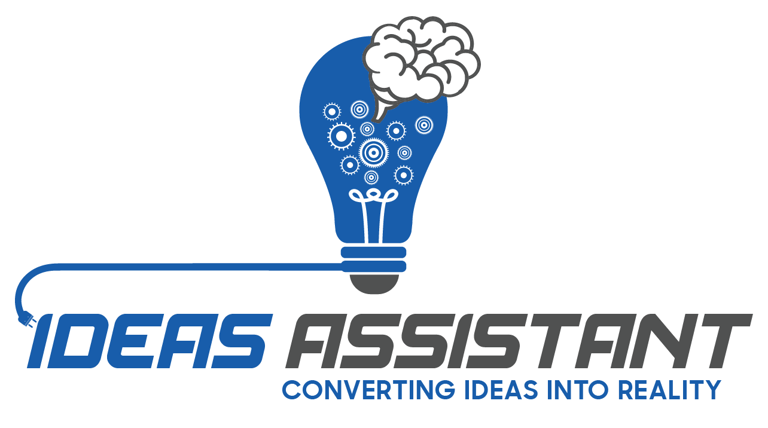From Concept to Deployment: A Comprehensive Guide to Designing and Developing Your Own IoT Product
Explore the key steps involved in creating a successful IoT product, from defining your concept to testing and manufacturing, and unleash the power of the Internet of Things.
IOT TECHNOLOGY
IdeasAssistant
4/6/20234 min read


The Internet of Things (IoT) has rapidly transformed the way we interact with the world around us, enabling us to connect and control various devices and systems through a network of sensors and actuators. From smart homes and cities to industrial automation and healthcare, IoT technology is being used to enhance our lives and businesses in countless ways.
If you're looking to develop your own IoT product, there are several key steps involved in the design and development process that you need to be aware of. In this article, we'll take a closer look at each of these steps and discuss some best practices for successfully bringing your IoT product to market.
Step 1: Define your product concept
The first step in designing and developing an IoT product is to define your product concept. This involves identifying the problem that your product aims to solve and the target audience that you're trying to reach. You should also conduct market research to identify any existing products or solutions in the market, as well as any gaps or opportunities for innovation.
Once you have a clear understanding of your product concept and target audience, you can begin to develop a product roadmap that outlines the features, functionality, and technical requirements of your IoT product.
Step 2: Develop your product architecture
The next step in the IoT product design and development process is to develop your product architecture. This involves defining the overall system structure, including the hardware and software components, as well as the communication protocols and interfaces that will be used to connect your IoT devices.
Your product architecture should be designed with scalability, reliability, and security in mind, and should be able to support the expected data volume and traffic. You should also consider any regulatory or compliance requirements that may apply to your IoT product.
Step 3: Design your hardware
Once your product architecture is in place, you can start designing your hardware. This involves selecting the appropriate sensors, actuators, and other components that will be used to capture and transmit data to your IoT platform.
When designing your hardware, you should consider factors such as power consumption, form factor, and durability, as well as any environmental or operational conditions that may impact the performance of your IoT devices.
Step 4: Develop your software
With your hardware design in place, you can now focus on developing the software that will power your IoT product. This includes the firmware that runs on your IoT devices, as well as the backend software that manages and processes the data collected from your IoT devices.
Your software should be designed with scalability, reliability, and security in mind, and should be able to support the expected data volume and traffic. You should also consider any data processing and analytics capabilities that may be required to extract insights from the data collected by your IoT devices.
Step 5: Test and validate your IoT product
Once your hardware and software designs are complete, it's time to test and validate your IoT product. This involves conducting various types of testing to ensure that your product meets the technical requirements and functional specifications outlined in your product roadmap.
Some of the types of testing that you should consider include functional testing, performance testing, security testing, and user acceptance testing. You should also consider any compliance or regulatory testing that may be required for your IoT product.
Step 6: Manufacture and deploy your IoT product
With your IoT product tested and validated, you're ready to move on to the manufacturing and deployment phase. This involves sourcing the necessary components, assembling your IoT devices, and deploying them to your target market.
When manufacturing your IoT product, you should consider factors such as cost, quality, and scalability, as well as any regulatory or compliance requirements that may apply to your product. You should also consider the logistics of deploying and maintaining.
How IdeasAssistant can help Entrepreneurs???
Entrepreneurs who are looking to develop IoT products face a number of challenges, including navigating complex technical requirements, managing the development process, and ensuring that their products meet regulatory standards. This is where IdeasAssistant can be of great help.
IdeasAssistant can bring a wealth of expertise and experience to the design and development of IoT products. They can provide end-to-end support for the entire product development lifecycle, from ideation to prototyping to manufacturing. By partnering with IdeasAssistant, entrepreneurs can benefit from the following advantages:
Technical Expertise
IoT product development requires specialized technical knowledge and expertise. IdeasAssistant can provide access to a team of experts in areas such as hardware design, software development, and cloud services. This can help entrepreneurs to accelerate their development process and ensure that their products are built to the highest technical standards.
Agile Development
IdeasAssistant often uses agile development methodologies, which allow for rapid iteration and prototyping. This can help entrepreneurs to quickly refine their product concepts and get to market faster.
Regulatory Compliance
IoT products are subject to a number of regulatory standards, including safety and security standards. IdeasAssistant can help entrepreneurs to navigate these requirements and ensure that their products meet all necessary standards and certifications.
Cost Efficiency
Developing an IoT product can be expensive, particularly when it comes to hardware development. IdeasAssistant can leverage economies of scale to provide cost-effective solutions, such as using off-the-shelf components or designing for manufacturability.
Overall, partnering with IdeasAssistant can help entrepreneurs to overcome the challenges of developing IoT products and bring their ideas to market faster and more efficiently. By leveraging the expertise and resources of IdeasAssistant, entrepreneurs can focus on what they do best - innovating and growing their businesses.
